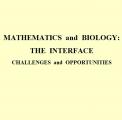
Voting, Arbitration & Fair Division: Mathematics of Social Choice
by Marcus Pivato
Publisher: Trent University 2007
Number of pages: 181
Description:
An introduction to social choice theory, which uses mathematics to study the strengths/weaknesses of voting systems, arbitration schemes, and other methods of group decision making. Lots of pictures, requires only basic linear algebra.
Download or read it online for free here:
Download link
(3MB, PDF)
Similar books
 Fractional Dynamics
Fractional Dynamicsby Carlo Cattani, et al. - De Gruyter Open Ltd
The book is devoted to recent developments in the theory of fractional calculus and its applications. Particular attention is paid to the applicability of this currently popular research field in various branches of pure and applied mathematics.
(7150 views)
 Handbook of Mathematics for Engineers
Handbook of Mathematics for Engineersby E. V. Huntington, L. A. Fischer - McGraw Hill
The Handbook contains, in compact form, accurate statements of those facts and formulas of mathematics which are likely to be useful to the worker in applied mathematics. It is thought to be more comprehensive than any other similar work in English.
(26455 views)
 A Short Course on Approximation Theory
A Short Course on Approximation Theoryby N. L. Carothers - Bowling Green State University
The text is intended as a survey of elementary techniques in Approximation Theory for novices and non-experts. It is sufficient background to facilitate reading more advanced books on the subject. Prerequisites include a course in advanced calculus.
(12082 views)
 Mathematics and Biology: The Interface, Challenges, and Opportunities
Mathematics and Biology: The Interface, Challenges, and Opportunitiesby Simon A. Levin
This report explores the interface between biology and mathematics. It argues that the stimulation of biological application will enrich the discipline of mathematics for decades or more, as have applications from the physical sciences in the past.
(18758 views)